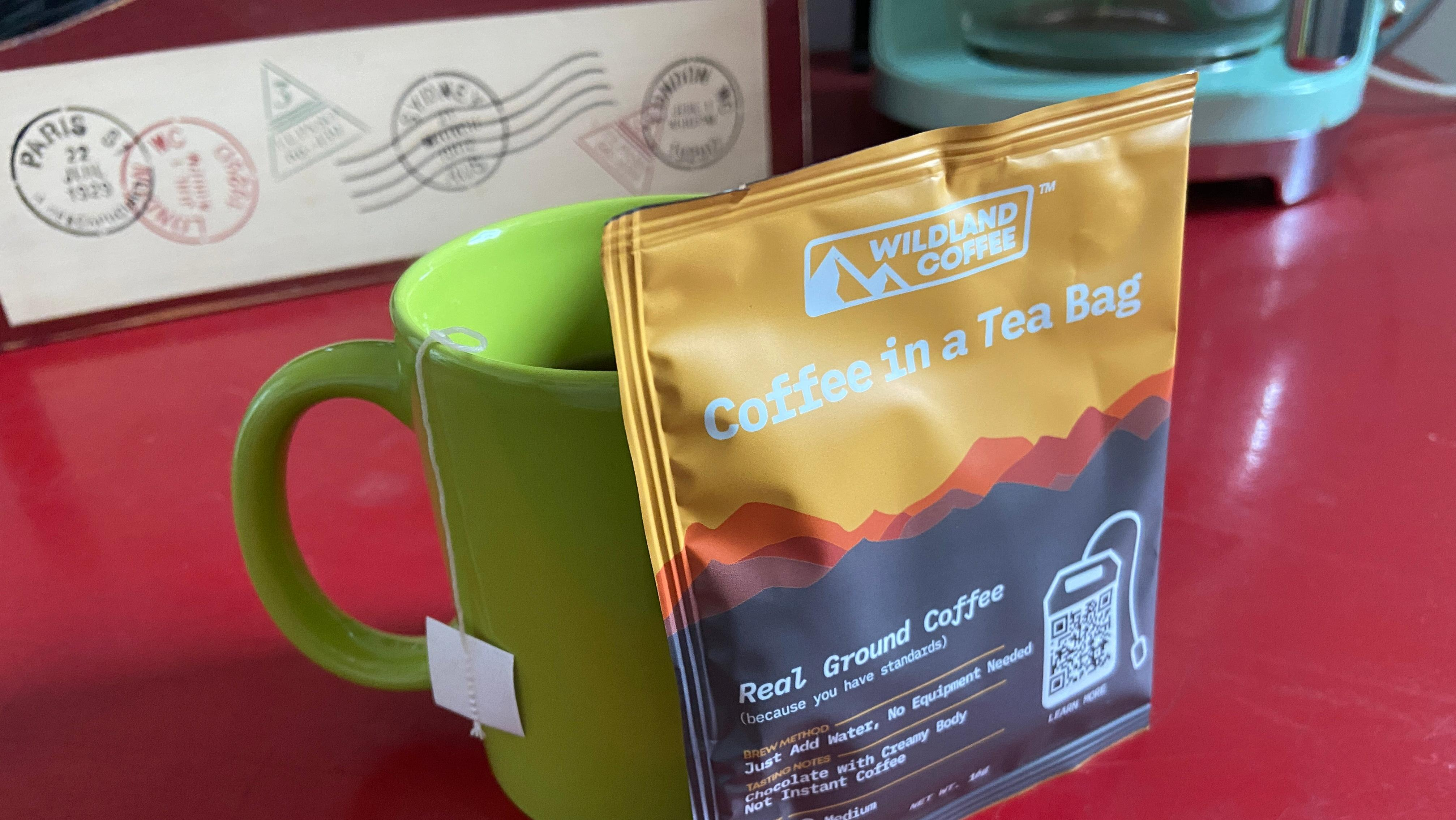Can You Really Brew Decent Coffee In A Tea Bag?
Wildland Coffee is branding itself as the easiest way to enjoy a cup of joe while camping or traveling. But is it really any better than instant?
I've never lugged a French press on a camping trip. I've always been lucky enough to camp with coffee aficionados who handle that part, but I can imagine it gets mighty tedious. Unfortunately, the only real alternative is instant coffee, which I think tastes a lot like a wedgie feels. Forced to choose between bulky equipment and foul-tasting sludge, what's a caffeine-starved outdoor adventurer to do?
With that question in mind, a few brands have moseyed down a different path: putting pre-ground coffee in a tea bag and selling it to outdoor enthusiasts and lazy homebrewers alike. Folgers offers Coffee Singles, which are individual bags of ready-to-steep coffee. Tea brand Hugo Tea offers a similar product, and Santa Cruz-based coffee startup Steeped raised thousands on Kickstarter for its teabagged coffee.
Personally, I've always found coffee in a tea bag a little suspect. How could a mug of hot water deliver the flavor-boosting extraction of a pour-over, French press, or drip coffee machine? But faced with a summer of outdoor adventures and dreading Sanka's metallic aftertaste, I decided to try a new brand: Wildland Coffee.
(Full disclosure: I hadn't heard of Wildland until one of the brand's reps reached out to me, and I wasn't particularly interested in trying coffee in a tea bag. I was, however, intrigued by the brand's approach, which is aggressively targeted toward outdoor enthusiasts in a way that seems unique when compared to other similar brands. It seemed the most compatible with my interests, so I decided to give it a try.)
The coffee
Wildland is new to the scene, having launched in March of 2021. Zach Frantz, the founder of Wildland Coffee, is a lifelong camper who started the company after a French press snafu in the middle of the woods. "I thought, 'Why not just put ground coffee into a tea bag?,'" Frantz writes on the company's website. Now, the brand seeks to become the "go-to coffee for everyone who loves the outdoors."
The coffee is sourced from Cerrado, Brazil; ground; then placed in a tea bag and "nitro-flushed" to keep it fresh for up to 12 months. What, pray tell, is nitro-flushing? I've never worked in coffee, so I wasn't familiar with nitro-flushing, or nitrogen flushing. It's apparently a common tactic to keep grounds or beans fresh and involves flushing the coffee with food-grade nitrogen as the bag is filled. Wildland's nitro-flushing practice replaces the oxygen in the bag, keeping the coffee fresh for months—at least 12 months, as the brand's website claims.
The taste test
Wildland's signature blend is a medium roast which tastes like "dark chocolate, caramel, and peanut butter with a creamy body," at least according to the website. With this in mind, I took my own creamy body to my kettle and boiled some water to find out if it tasted half decent.
The coffee's packaging recommends eight ounces of boiling water per one tea bag. That is, admittedly, a pretty small cup of coffee for me; on an average morning, I go for a 12-ounce pour. But I followed the instructions to the letter and poured exactly eight ounces of boiling water over a tea bag of coffee. I then steeped the coffee for eight minutes, the longest recommended duration on the packaging.
Once it finished steeping, I removed the bag and took a good look at the results. I had in my hands what appeared to be a standard cup of coffee. It looked like coffee, and it smelled like coffee, with a mild scent that reminded me of standard Folger's.
I'm usually a cream fanatic, but I drank the coffee black to achieve the most objective assessment. At first sip, the coffee tasted thin. I took a few more sips, but the coffee just wasn't very robust, even after the full eight-minute steeping period. I swirled the coffee around and noticed a thin layer of sediment on the bottom of the mug; upon reaching the bottom, I realized the only real flavor existed in a thin layer just before the end of the cup. The result tasted a bit like gas station coffee: something that'll do in a pinch, but can't really stand up to my daily brew.
The verdict
As I suspected, coffee in a tea bag isn't the most fabulous thing. But, like I said, it'll do in a pinch, and it's certainly not the worst coffee I've ever tasted. If you're the kind of person who totes a French press or pour-over system on your camping trips, though, this stuff probably isn't going to impress you. This isn't necessarily an indictment of Wildland as a brand. Ultimately, I don't see how any coffee manufacturer could make this work, as the bean's flavors just don't come through as strongly during the extraction process.
Wildland's motto is: "Why do things the hard way, when you could do things the easy way?" It's a tempting fantasy: drinking delicious coffee with the greatest of ease, even on a remote mountaintop. But good things take patience, especially in the coffee realm. Maybe there's something to be said for doing things the hard way. In the meantime, I'm sticking with my French press-toting camping buddies.
